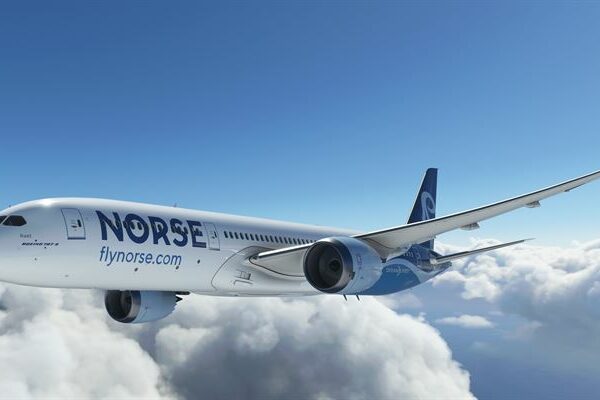easyJet’s boss says electric-powered commercial aviation “is becoming a reality” with the industry now able to foresee a short-haul future “not exclusively dependent on jet fuel.”
Johan Lundgren, CEO, described a future where the low-fare carrier could establish “electric flyways” on key short-haul routes. Lundgren made his comments as its partner, US-based Wright Electric, confirmed it was progressing into the next phase of the development of its electric aircraft design.
Wright Electric has applied for the patent on a novel motor design for an ‘easyJet-sized aircraft’, with routes such as London-Amsterdam (Europe’s second busiest route) seen as a strong contender for full electric flying in the future.
Lundgren said: “We know it is important to our customers that we operate sustainably and with the introduction of A320neos, we can already provide a 15% reduction in carbon emissions and 50% less noise footprint, putting us amongst the best-ranking airlines in Europe. Looking forward, the technological advancements in electric flying are truly exciting and it is moving fast. From the two-seater aircraft, which is already flying, to the nine-seater which will fly next year, electric flying is becoming a reality and we can now foresee a future that is not exclusively dependent on jet fuel.”
The target range of the envisaged electric aircraft is around 500 kilometres, he added, which within the airline’s current portfolio would mean a route like Amsterdam to London could become the first electric ‘flyway’. As Europe’s second busiest route currently, this could offer significant reductions in noise and carbon emissions, with multiple take offs and landings every day, he added.
“We think the Netherlands has an opportunity to lead the way if the Government and airports encourage airlines to operate in the most sustainable way now and in the future and incentivise them through a different and lower charging structure,” stated Lundgren.
Wright Electric is underway with work on an engine that will power a nine-seater aircraft. Its partner Axter Aerospace already has a two-seater aircraft flying, and the larger design could potentially start flying as soon as next year, it is claimed. The prototype propulsion system for the nine-seater would be four times more powerful than the system installed on the two-seater.
Work will start on the larger aircraft by designer Darold Cummings. Wright Electric says the filing of the patent for the more powerful motor was a development that “suggests that the transition towards an all-electric commercial passenger jet capable of flying passengers across easyJet’s UK and European network is in sight.”
Since 2000, easyJet has reduced its carbon emissions per passenger per kilometre by over 32%.







